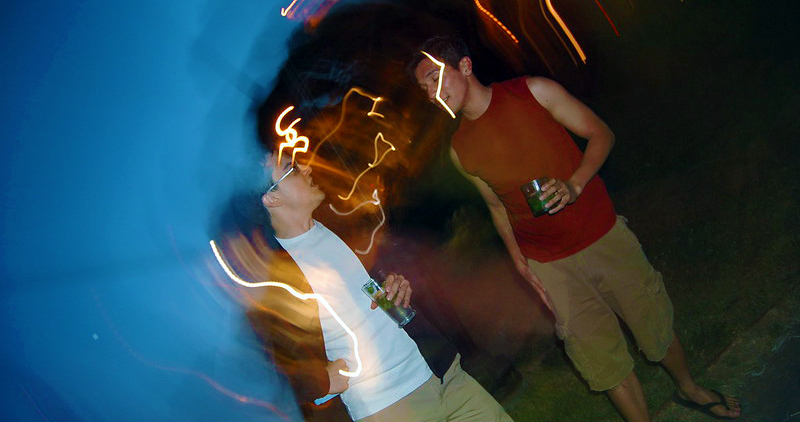Evaluation

“All the information contained in this section is for guidance only. Psious environments are therapy supporting tools that must be used by the healthcare professional within an evaluation and intervention process designed according to the characteristics and needs of the user.
Also remember that you have the General Clinical Guide in which you have more information on how to adapt psychological intervention techniques (exposure, systematic desensitization, cognitive restructuring, chip economy…) to Psious environments.”
Before starting with the specific information on the evaluation and intervention of craving in substances (alcohol, tobacco and cannabis) it is important to remember that the impulse to use is only one of the many aspects in which it should intervene in a patient with a related disorder with substances. The importance of a multidisciplinary intervention, adjusted to the socio-family situation and the patient’s state of change, as well as the need to assess comorbidity with other pathologies, both physical and related to mental health, is highlighted again.
Craving and its evaluation through Virtual Reality
Craving or consumption impulse is defined in DSM 5 as the intense concern or need to use the substance, it is a complex phenomenon that encompasses neurobiological and psychological mechanisms. DSM 5 added craving as a crucial diagnostic criterion for substance-related disorders.
As already indicated in the introduction, the management of craving is only one of the elements to work within the global process of intervention in a substance-related disorder, and that although it is still a controversial issue, various authors consider it as a predictive factor of relapse (Paliwal et al., 2008; Galloway and Singleton, 2009).
Virtual reality enables the simulation of drug-related signals and environments to induce craving and thus can serve as an ecologically valid complement to traditional craving assessments (Hone-Blanchet et al. 2014).
With the scenes in the Bar Terrace environment, both the degree of craving of proximal and contextual signals can be evaluated in an ecological way. Likewise, it is possible to assess the differences between the intensity of the consumption impulse in situations in which there is no or there is social interaction. In both cases you can use a Visual Analogue Craving Scale (EVAC). Likewise, and thanks to the Psious Heat Maps, you will be able to evaluate the levels of attention to the signals (O’Neill, A. et al., 2020).
Some useful strategies and instruments for the evaluation of Craving in substance-related disorder.
Beyond the semi-structured interview for the general anamnesis of the patient, in which for the evaluation of craving it will be very relevant to inquire about the availability of the substance, the patient’s status regarding consumption and if the patient is following any pharmacological treatment for the abstinence, we collect below a set of procedures and tests for the evaluation of craving in relation to the use of substances (alcohol, tobacco and cannabis).
Visual Analogue Craving Scale (EVAC-CVAS) and Heat Maps
By presenting stimuli included in the virtual environment of the Terrace you will be able to detect and graduate the signals / keys / triggers:
1. Make a baseline, in a neutral environment for the patient (for example the island, the airport …) of the measures that you are going to use during the therapeutic process (for example the sense of presence, skin conductance, EVAC …)
2. Select the signals to which each subject will be exposed based on their consumption history and / or preferences.
3. Set up the virtual environment to present the stimuli. Use the configuration variables and events to gradually scale the intensity and type of stimuli.
4. Evaluates through VAS the degree of craving generated by the stimulus.
5. From the data you can make a hierarchy.
6. Once the evaluation is completed, if necessary, remember to help your patient manage the craving before finalizing the consultation.
SELF-REPORTS
Another way to evaluate the consumption impulse will be the use of self-reported scales. Here are some tests that can be useful in the evaluation of addictions in general, and Craving in particular.
b.1) General tests on addiction-related disorders:
- SOCRATES V8 (Stages Of Change Readiness And Treatment Eagerness Scale; Miller and Tonigan, 1996)
- Dependence severity scale (Gossop et al, 1997)
- ASI (Addiction Severity Index, McLellan et al., 1980 and Guerra, D., 1994), ASI-6, EUROPASI and T-ASI (adolescents)
- CAGE (Chronic Alcoholism General Evaluation, Mayfield et al. 1974)
- AUDIT (Alcohol Use Disorders Identification Test, Saunders et al. 1993 and Babor, T. F et al. 2001)
- Glover-Nilsson Test for smoking (Glover, ED et al. 2001)
- Fagerström Tests for nicotine dependence (Heatherton TF et al., 1991)
- MPS (Marijuana Problem Scale, Stephens, RS, 1994)
b.2) Craving:
- ISD-100: Inventory of Drinking Situations., Annis, H., 1982)
- AUQ (Alcohol Urge Questionnaire, Bohn, MJ et al. 1995)
- ACQ-SF-R (Alcohol Craving Questionnaire – Short Form – Revised Singleton et al., 1995 and Gálvez et al. 2016).
- QSU-Brief (Brief Questionnaire of Smoking Urges, Cox et al, 2001)
- MCQ: (Marijuana Craving Questionnaire, Heishman SJ et al., 2001)
- MAPI: Marijuana Adolescent Problem Inventory, Johnson V & White HR, 1989).
[ DISCLAIMER: This document has been automatically translated using Google Translate. ]